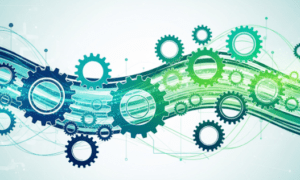The vastness of the world’s oceans has always posed a challenge to human exploration and trade. But with the advent of large ships, mankind gained the ability to conquer these expansive waters. At the heart of these magnificent vessels lies a remarkable innovation—the large ship propeller. These propellers are the unsung heroes of the maritime industry, propelling massive ships across the seas with precision and power. In this blog, we will embark on a fascinating journey into the realm of large ship propellers, delving into their different types and exploring the intricate mechanisms that make these engineering marvels possible.
Marine Propeller Types
Fixed-Pitch Propellers:
Fixed-pitch propellers are widely used in large ships as they offer simplicity, reliability, and cost-effectiveness. These propellers consist of a hub connected to multiple blades with a fixed angle or pitch. Fixed-pitch propellers work well for ships with consistent operating conditions and speed requirements. They are commonly found in cargo vessels, tankers, and bulk carriers.
Controllable-Pitch Propellers (CPP):
Controllable-pitch propellers provide the ability to adjust the blade pitch during operation. This flexibility allows for optimal performance across a wide range of speeds and load conditions. CPPs are widely utilized in large ships, including passenger liners, cruise ships, and naval vessels, where maneuverability, fuel efficiency, and precise control are critical.
Fixed-Pitch Reversing Propellers:
Fixed-pitch reversing propellers are designed to provide reverse thrust, allowing ships to maneuver in tight spaces and dock safely. These propellers have blades with a fixed pitch but can be rotated to change the direction of propulsion. Fixed-pitch reversing propellers are commonly found in large ships such as ferries, offshore supply vessels, and naval vessels.
Adjustable-Pitch Propellers:
Adjustable-pitch propellers offer manual or external intervention to adjust the blade pitch, allowing for optimization of performance at different speeds and operating conditions. These propellers are commonly used in large ships that require occasional adjustment but not during normal operation. They provide versatility and efficiency in vessels such as research ships and icebreakers.
Controllable Surface-Piercing Propellers:
Controllable surface-piercing propellers are designed to operate partially above the water surface. These propellers feature shorter blades positioned closer to the water surface, reducing drag and increasing efficiency. They offer excellent maneuverability and are commonly used in large ships, including fast ferries, high-speed catamarans, and naval vessels.
Ducted Propellers:
Ducted propellers, also known as Kort nozzles, incorporate a nozzle around the propeller blades. The nozzle improves propulsion efficiency by increasing thrust while reducing energy losses. Ducted propellers are commonly found in large ships that require high maneuverability, such as tugboats, offshore support vessels, and icebreakers.
Twin Propellers:
Twin propellers, also referred to as twin-screw propulsion systems, utilize two propellers mounted on separate shafts. This configuration offers redundancy, improved maneuverability, and increased propulsion power. Twin propellers are commonly used in large ships such as cruise liners, container ships, and offshore drilling vessels.
Contra-Rotating Propellers:
Contra-rotating propellers consist of two propellers mounted on the same shaft but rotating in opposite directions. This configuration enhances propulsion efficiency by eliminating rotational losses and reducing cavitation. Contra-rotating propellers are commonly found in large ships, including high-speed ferries, naval vessels, and certain types of cargo ships.
Azimuth Thrusters:
Azimuth thrusters, also known as Z-drives or pod propulsion systems, are electric or hydraulic motors housed in steerable pods that can rotate 360 degrees horizontally. These thrusters offer exceptional maneuverability and are commonly used in large ships such as cruise liners, ferries, and offshore vessels.
marine propeller is engineering marvels that empower massive vessels to navigate the seas with efficiency, power, and precision. Each propeller type is meticulously designed to meet the specific requirements of different vessels, considering factors such as size, operating conditions, and maneuverability needs. From the simplicity of fixed-pitch propellers to the versatility of controllable-pitch propellers and the maneuverability of azimuth thrusters, ship propellers continue to evolve to meet the demands of the maritime industry. By understanding the various propeller options available, ship owners and operators can make informed decisions to optimize performance, fuel efficiency, and overall vessel handling, ensuring smooth and successful journeys across the oceans.





























